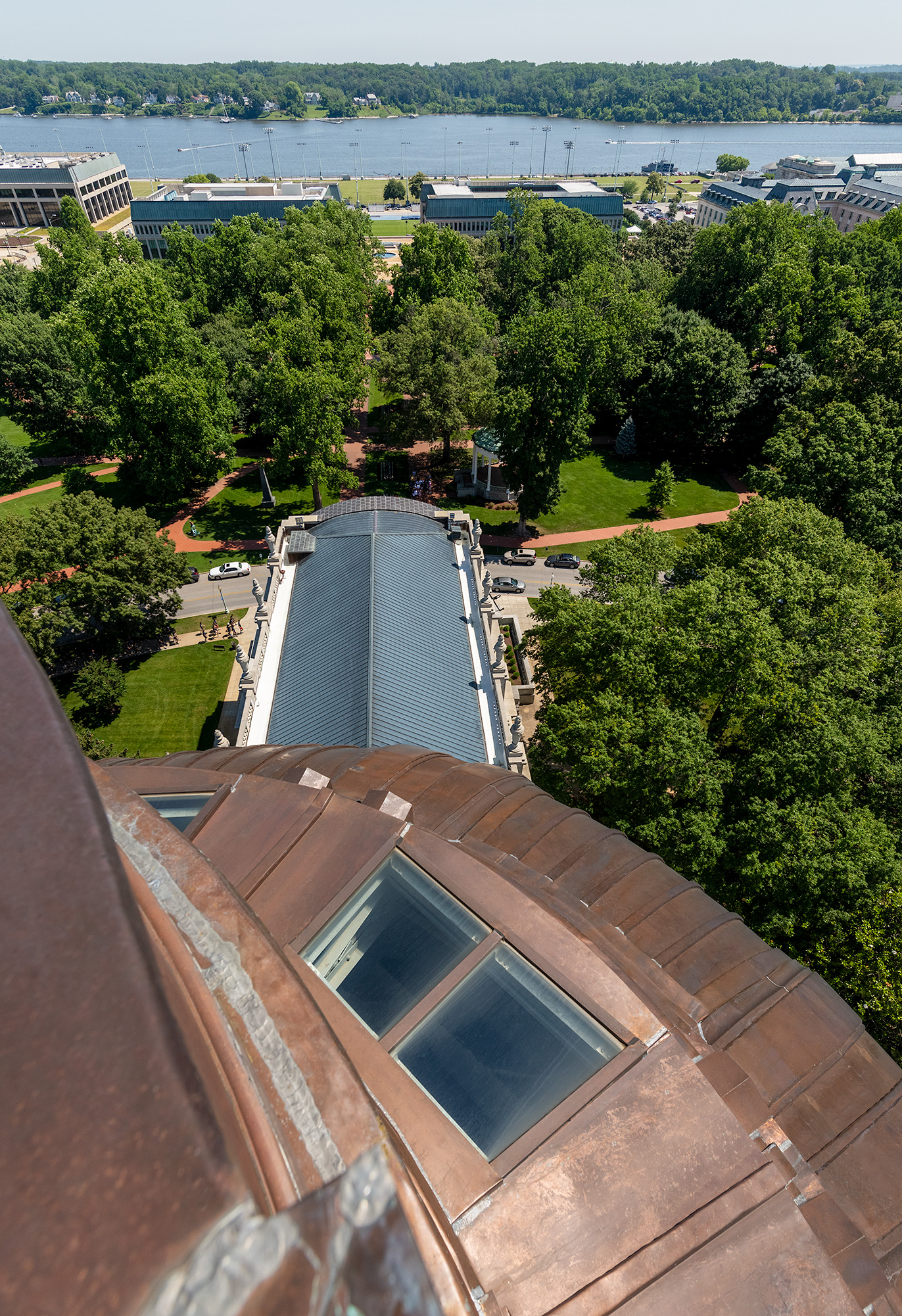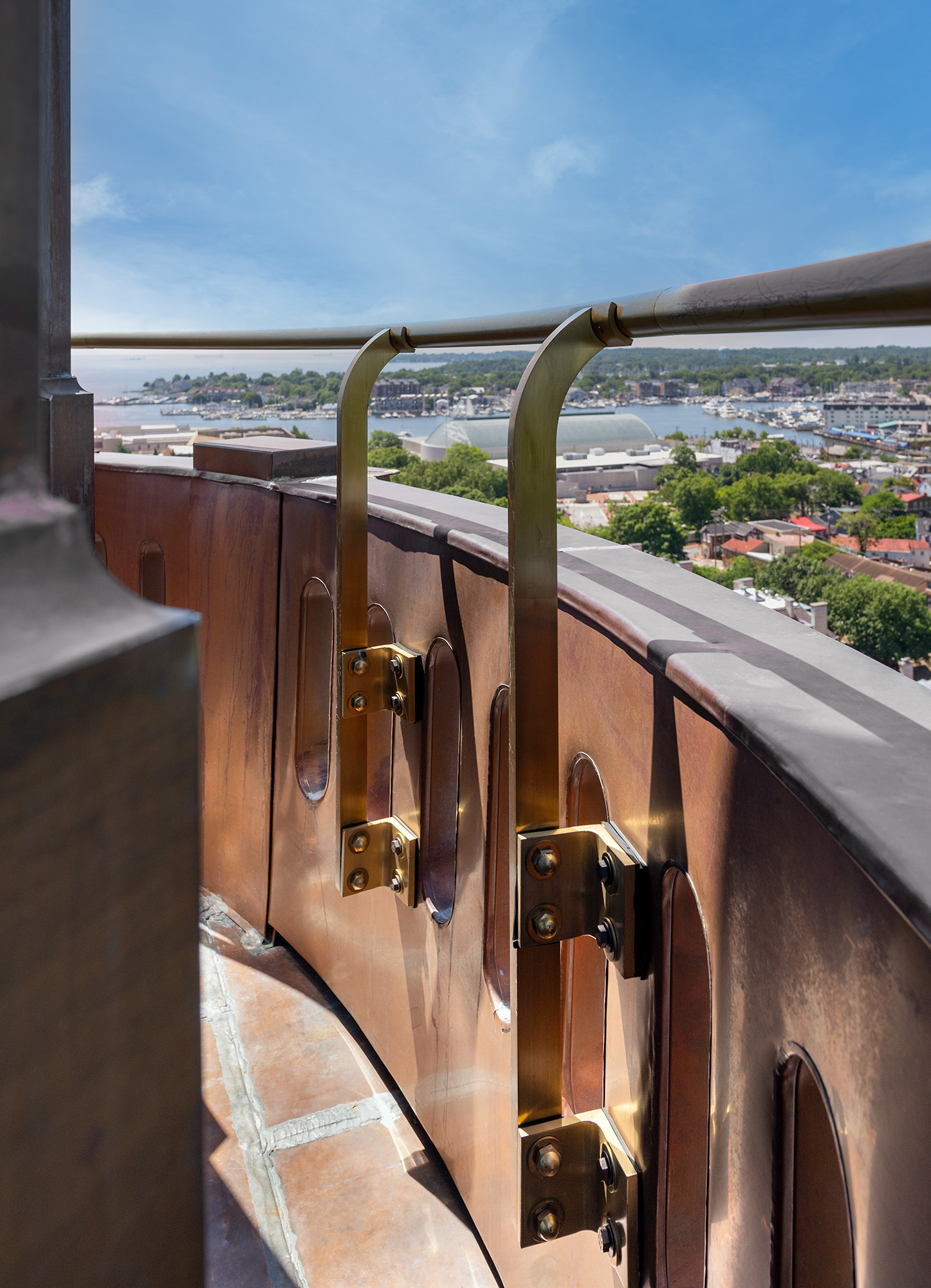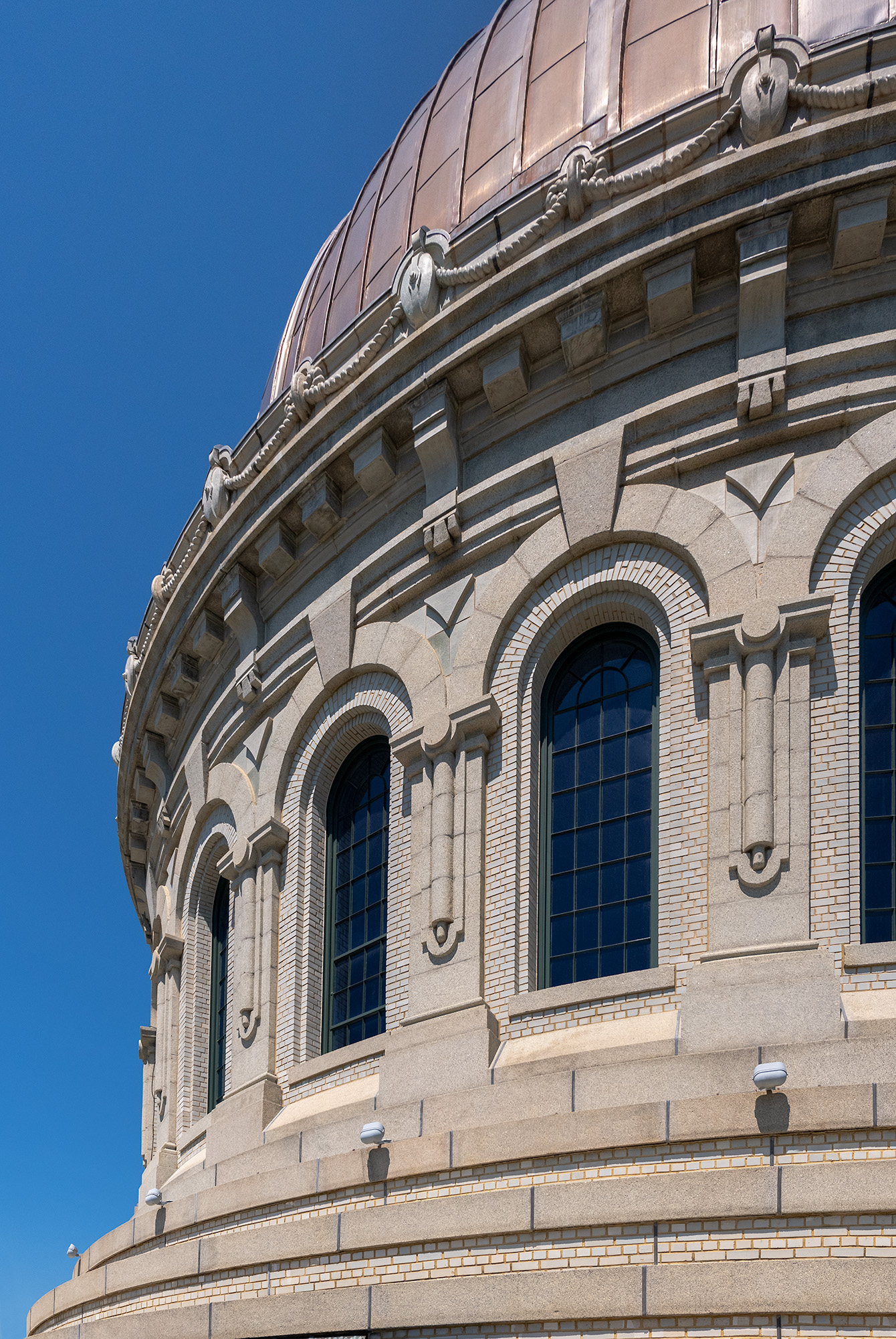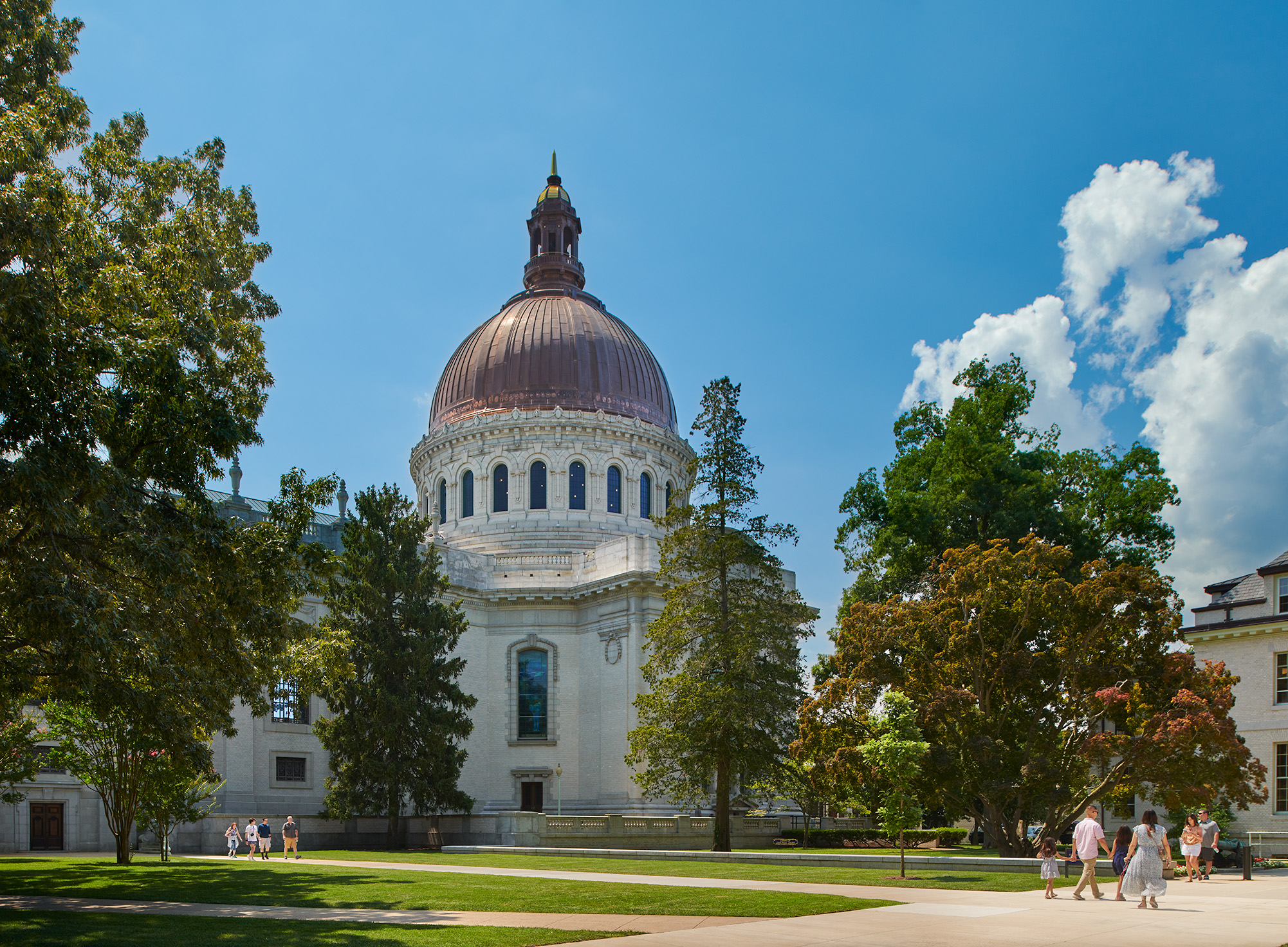Annapolis, Maryland
Restoration
Architect
BELL Architects, PCWashington, District of Columbia
Architect
Rogers, Lovelock & Fritz (RLF)Orlando, Florida
General Contractor
G-W Management Services LLCRockville, Maryland
Sheet Metal Contractor
Prospect Waterproofing CompanySterling, Virginia
Decorative Copper Manufacturer
CopperCraftFort Worth, Texas
Waterproofing/Cladding Design Consultant
Seal EngineeringAlexandria, Virginia
The United States Naval Academy (USNA) Chapel was designed by Ernest Flagg and constructed in 1904-1908. The dome was one of the first reinforced concrete domes built in the United States, and it was originally clad in decorative terracotta. The chapel, defined by its large dome, was a central part of Flagg’s master plan for the new Naval Academy campus in Annapolis, MD.
Within a decade of the original chapel’s completion, however, significant leaking at the dome was already observed, and in 1929 the terracotta was removed and replaced with copper. For this project, a team led by BELL Architects, architects Rogers, Lovelock & Fritz (RLF), and contractor G-W Management Services along with contractor Prospect Waterproofing Company sought a comprehensive approach to address the dome’s chronic moisture issues. This work included replacing all copper cladding on the dome and lantern, replacing flashing across the roofs, introducing through-wall flashing at the parapets along the perimeter of the dome and nave, replicating the gold-leafed ornamentation, and installing custom copper-clad skylights.
At the dome’s base, the team started with relatively large copper sheets and flat panels and then progressed up the dome, utilizing 20,000 square feet of 20-ounce copper sheets. The curvature and changing panel widths made this process more complex. They also worked on the cupola floor that created the cap for the crown and consisted of standard flat-locked and soldered copper panels.
Decorative elements fabricated by metalwork partner CopperCraft were installed at the cupola. This included mostly two-dimensional panels and trapezoidal sections that were rolled for the curved sections and seamed at the corners and horizontal joints. To match the historic profiles on the building, the team used H00 temper cold rolled copper sheets. The project also employed 50 feet of brass alloy C38500 tubes and plates for a custom-fabricated guardrail. With its newly restored roof, the chapel will continue to serve Midshipmen for generations to come.





